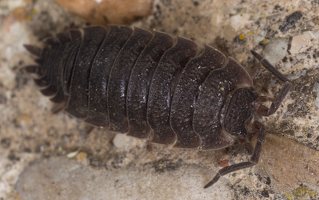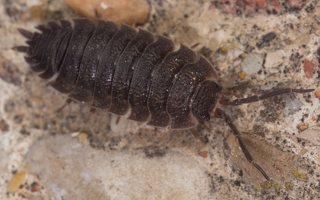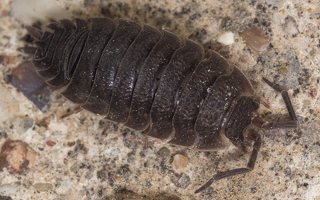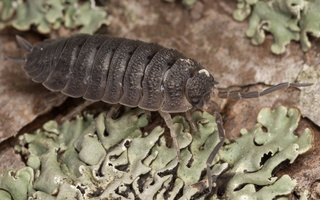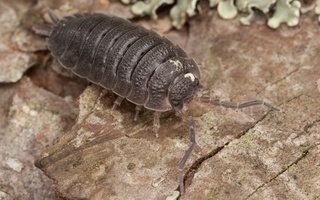- sort orderDefault
Photo title, A → Z
Photo title, Z → A
✔ Date created, new → old
Date created, old → new
Date posted, new → old
Date posted, old → new
Visits, high → low
Random
 home / Crustacea · vėžiagyviai / Oniscidae · vėdarėliai / Porcellio scaber · vėdarėlis
home / Crustacea · vėžiagyviai / Oniscidae · vėdarėliai / Porcellio scaber · vėdarėlis

Porcellio scaber · vėdarėlis
Porcellio scaber has an oval body, can grow up to 20 mm long, and is usually a grey colour, paler underneath, although, brown, blue, yellow, orange, or pinkish hues may also be observed. The dorsal (upper) surface of its segmented exoskeleton is covered in a series of small tubercles hence its common name.
Porcellio scaber loses water by diffusion through its permeable exoskeleton which lacks a waxy cuticle. Because of this, to avoid desiccation, it often seeks out environments with humid air and plenty of ground moisture, preferably cold to minimize rate of water loss, and dark to avoid detection by predators. It lives in a wide variety of damp habitats but it is less dependent on high levels of humidity than Oniscus asellus.
Porcellio scaber is a detritivore – it mainly feeds on decaying leaf litter but will consume any rotting plant matter. Living plants are of limited nutritional value for these woodlice which prefer to feed on the bacteria and fungi which cause decay. P. scaber has very sensitive olfactory receptors that allow it detect the smell of microbial activity and to locate food.
The females carry about 25 to 90 fertilized eggs until they hatch and are held in a fluid-filled sac at the ventral side of the abdomen for about 40–50 days. The young are reproductively mature after 3 months; the adult animals have a life expectancy of about two years.
